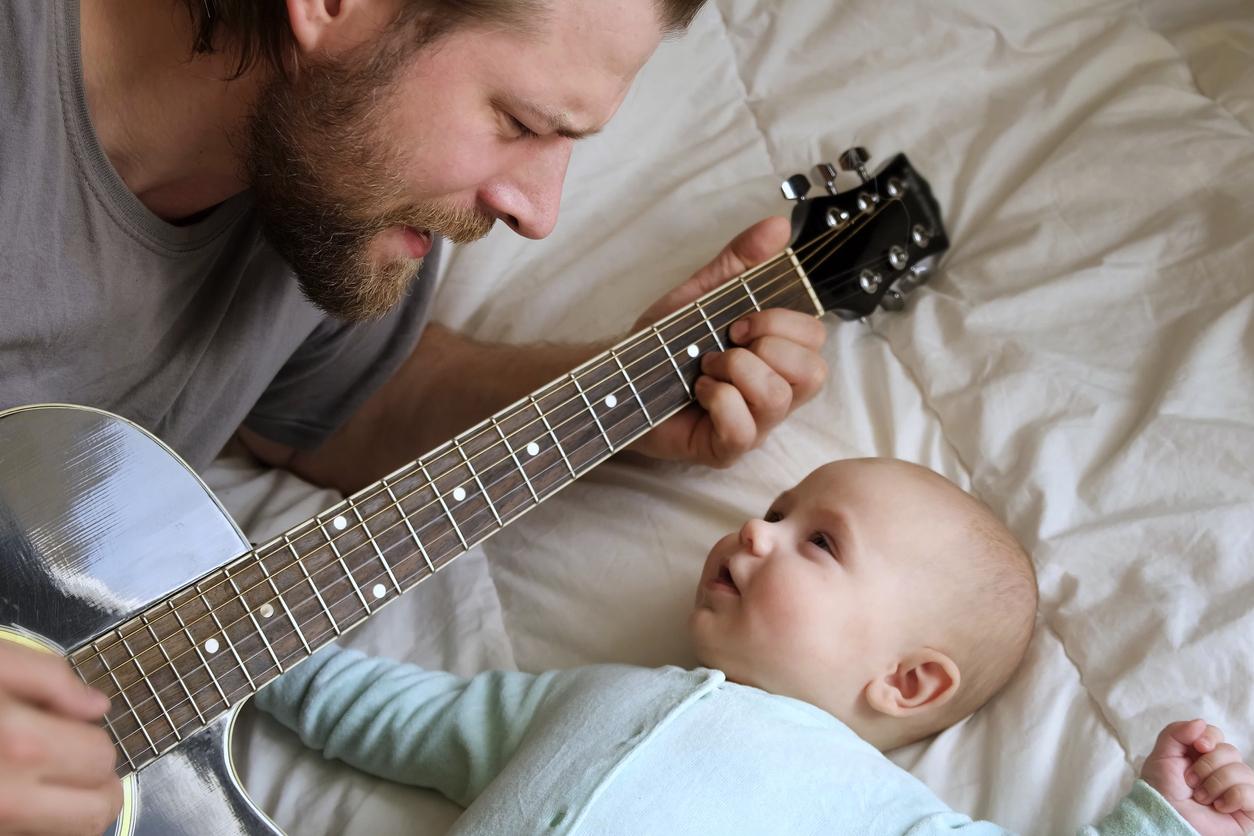According to a new study, babies are more receptive to rhythmic information than phonetic information and singing nursery rhymes to them would therefore boost their language learning.

- Babies are more receptive to rhythmic information than phonetic information.
- Singing nursery rhymes to them from a very young age would boost language learning.
- Babies only process phonetic information from the age of seven months.
“A green mouse, running in the grass”, “Lark, nice lark”… the vast majority of us still know the rest! These nursery rhymes, memories of our childhood, contribute to language learning. And, according to a study published in the journal Nature Communicationsmuch more than speech itself, it is the rhythm that allows babies to learn during their first months of life.
Baby: rhythmic information at the basis of language
Until now, scientists thought that infants learned individual sound elements to construct words. In other words, that language acquisition was based on phonetic information, which brings together the smallest sound elements of speech (alphabet, sounds, etc.). But researchers from Cambridge University (England) and Trinity College Dublin (Ireland) call this approach into question. According to them, phonetic information is understood and therefore learned too late by babies for it to be the origin of language learning. They believe that it is rhythmic information, from nursery rhymes for example, which allows people to pronounce their first words.
In their work, the researchers recorded the brain activity of 50 infants aged four, seven and eleven months while they watched a video of a primary school teacher. This one sang 18 different nursery rhymes. Analysis of the data shows that babies did not begin to process phonetic information reliably until they were seven months old.
“Our research shows that individual speech sounds are not reliably processed until around seven months, even though most infants can recognize familiar words like “bottle”explains Professor Usha Goswami, neuroscientist at the University of Cambridge, in a communicated. From this point on, individual speech sounds are still added very slowly, too slowly to form the basis of language.”
Learning to speak: singing for your baby as soon as possible
For Usha Goswami, rhythmic information (the emphasis placed on the different syllables of words and the rise and fall of tone) is indeed the key to language learning. Another one study has already shown that rhythmic speech information is processed by babies from the age of two months, and that individual differences predicted later linguistic outcomes.
Based on their data, the researchers believe that “Information about speech rhythm is the hidden glue that underlies the development of a well-functioning language system.” THE infants use it “like [une base] or a skeleton to add phonetic information“, also for “guess where one word ends and another begins when listening to natural speech.” So even if you sing out of tune, don’t hesitate to sing a green mouse to your little one.
“Parents should talk and sing to their babies as much as possible or use infant-directed speech like nursery rhymes because this will make a difference in language outcome”encourages the teacher Usha Goswami.

















